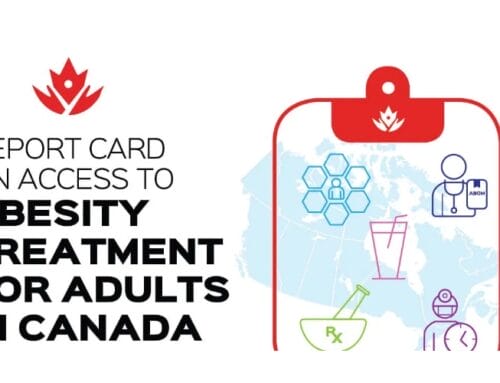Last month we asked you to provide questions for our expert, Dr. Jacob Shelley, surrounding the legal and human rights policy aspect of obesity in Canada. Below are the selected questions that were submitted to Jacob. As there was a degree of overlap or cohesiveness to the questions, Jacob decided to respond to the questions as a whole rather than question by question.
- With more and more information being shared about obesity from causes to treatment and so on,I have learned a great deal from Obesity Canada, but I must say that the information shared on weight bias and discrimination have been most impactful for me. I never looked at the way I have been treated as a form of discrimination. Rather, I bottled it down as something I deserved as I couldn’t manage my weight. Now with a better understanding of the disease,and understanding the weight bias/discrimination bit I wonder what is our course of action for defending or preventing such treatment? is this a human rights issue?
- Hi Jacob! My question to you is, are you aware of any legal cases involving obesity that have challenged policy or human rights? and if not, is there any parallels that can be made to other areas such as HIV/Aids?
- I know in the human rights realm things like race, religion and disabilities are protected. Would things like body size,weight and obesity also be protected?
- Can you explain what a disability is and would obesity classify as a disability?
Many years ago, I was struck by the opening sentence of Rebecca Puhl’s and Kelly Brownell’s 2012 paper, Bias, Discrimination, and Obesity, which reads: “It has been said that obese persons are the last acceptable targets of discrimination.” That sentiment has stayed with me over the years as I have worked in obesity-related research. Indeed, it has been so impactful that one year the overarching goal for my health care law class was to persuade the students that obesity discrimination was a serious matter impacting the delivery and quality of health care being offered to people living with obesity.
It is generally easy to show people the there is bias towards people living with obesity. One need only look at how people living with obesity are portrayed in the media, mocked in television and movies, and are the fodder of comedians to know that there is bias.
Discrimination is another matter. While discrimination can be defined broadly, often it is tied to human rights protection. Often legislative enactments do not define discrimination specifically but may instead identify discriminatory practices that are prohibited (see, for example, the Canadian Human Rights Act, sections 5-25). At its most basic, discrimination often refers to negative actions towards or poor treatment of a person or a group for reasons such as their race, age or disability. Human rights legislation and the Canadian Charter of Rights and Freedoms identify the various grounds of protection, including, among others, gender, religion, ethnicity, and, importantly for our purposes, disability.
This is often where people balk at the idea that there can be discrimination against people living with obesity. To accept that there can be discrimination against people living with obesity necessarily means that one must accept obesity is a disability. There are many reasons why people may be opposed to this. In addition to the aforementioned and prevalent bias against people living with obesity (characterized by, but not limited to, the attitude that people living with obesity are responsible for their own weight), there are many people who identify as obese/fat/heavy who would not also self-identify as disabled.
The Ontario Human Rights Commission (in an excellent backgrounder on this issue, see here) notes that disability is a complex and evolving term that covers a broad ranger of degrees and conditions. Disability may have present since birth, may be caused by an accident or illness, and can develop over time. Ontario’s Human Rights Code provides several definitions of disability, including that it is “any degree of physical disability, infirmity, malformation or disfigurement that is caused by bodily injury, birth defect or illness …” The Code goes on to provide several examples (e.g., diabetes mellitus, deafness, etc), but does not include obesity or weight. (Note, to avoid classifying obesity as a disability, there have been movements to include “weight” or “size” in human rights legislation).
On its face, it appears simple to assert that obesity is a disability, particularly if we accept obesity as a chronic disease – but as noted, there are many that object to this framing. But, perhaps most importantly, it does not matter if obesity is considered a disability, one only needs to demonstrate that it is perceived to be disabled. According to the Ontario Human Rights Commissions, the Code provides protection in situations “where a person does not currently have a disability, but they are treated adversely because of a perception that they will eventually develop a disability, become a burden, pose a risk, and/or require accommodation.” Further, the Commission notes that a disability may in fact arise due to a combination of impairments and barriers that individuals face, including “attitudinal barriers, inaccessible information, an inaccessible built environment or other barriers that affect people’s full participation in society.”
The above is sometimes discussed as the social approach or social model to disability – it holds that irrespective of a person’s actual impairment, how society treats that individual is the relevant consideration. From this perspective, discrimination arises even if it is based on perceptions or stereotypes that are inaccurate and do not correspond to actual limitations. In Quebec v Boisbriand the Supreme Court of Canada specifically noted that the perceived limitations of an individual should be considered part of the analysis for determining whether they are disabled and in Granovsky v Canada the Court noted that the discrimination analysis a court must undertake needs to consider “social handicapping” that can result from perceived disabilities. According to the Court in Granovsky, a socially constructed handicap “is not located in the individual at all but in the society in which the individual is obliged to go about his or her everyday tasks” (para. 34).
In short, whether obesity is a disability is not the only question or perhaps not even the most important question at this point; if a person’s weight is perceived to be a limitation or if social attitudes and barriers render obesity a socially constructed handicap, then discrimination laws apply to obesity.
This means that the treatment of people living with obesity is a human rights issue – and it is specifically a matter for discrimination law if people living with obesity are treated differently based on their actual or perceived limitations. Increasingly, courts are recognizing that obesity/weight as a disability, including success at courts in the EU and recently in Washington. However, more needs to be done to address the socially constructed handicapping of people living with obesity and to confront the continuing bias and stigma that people living with obesity face.






